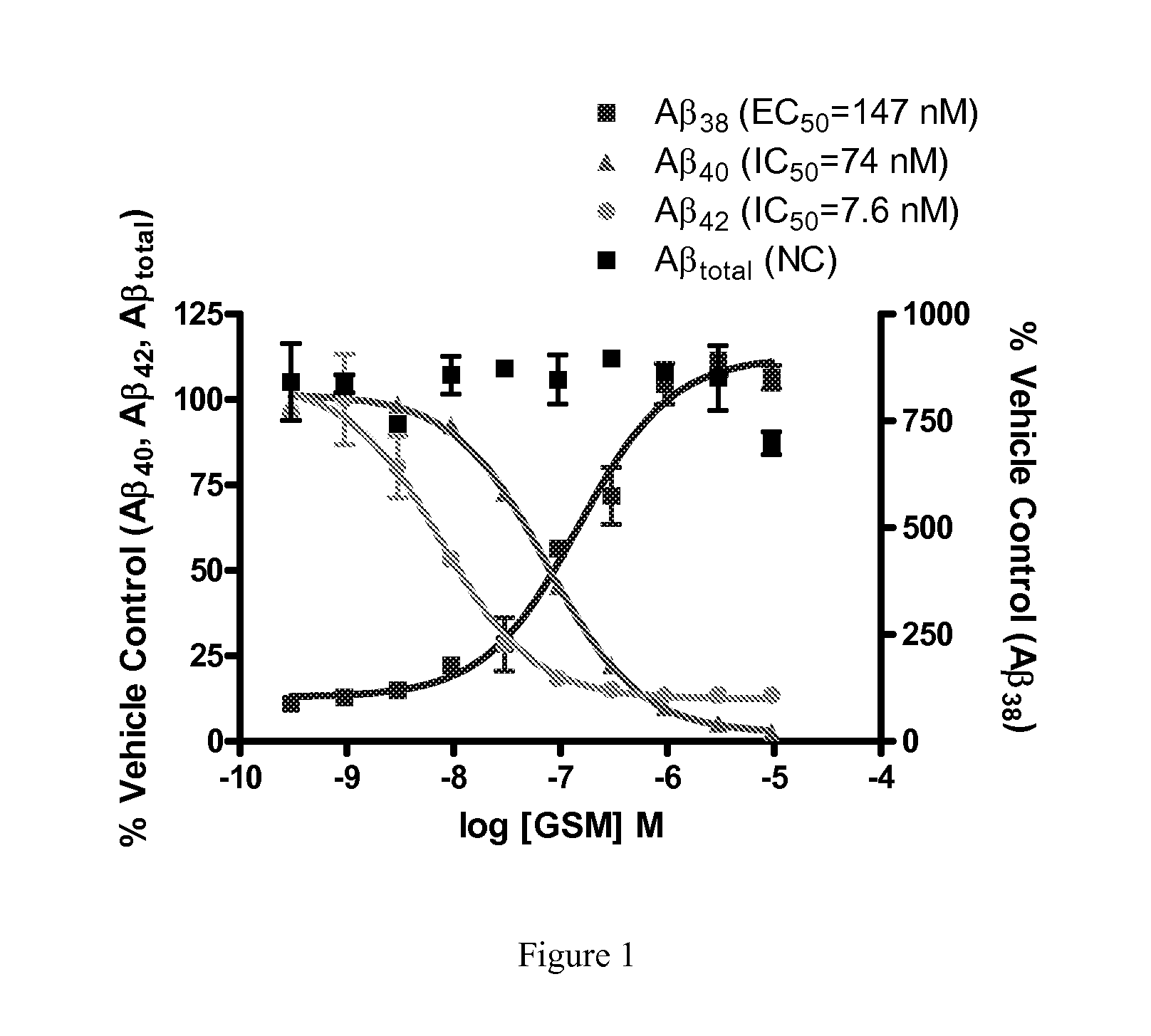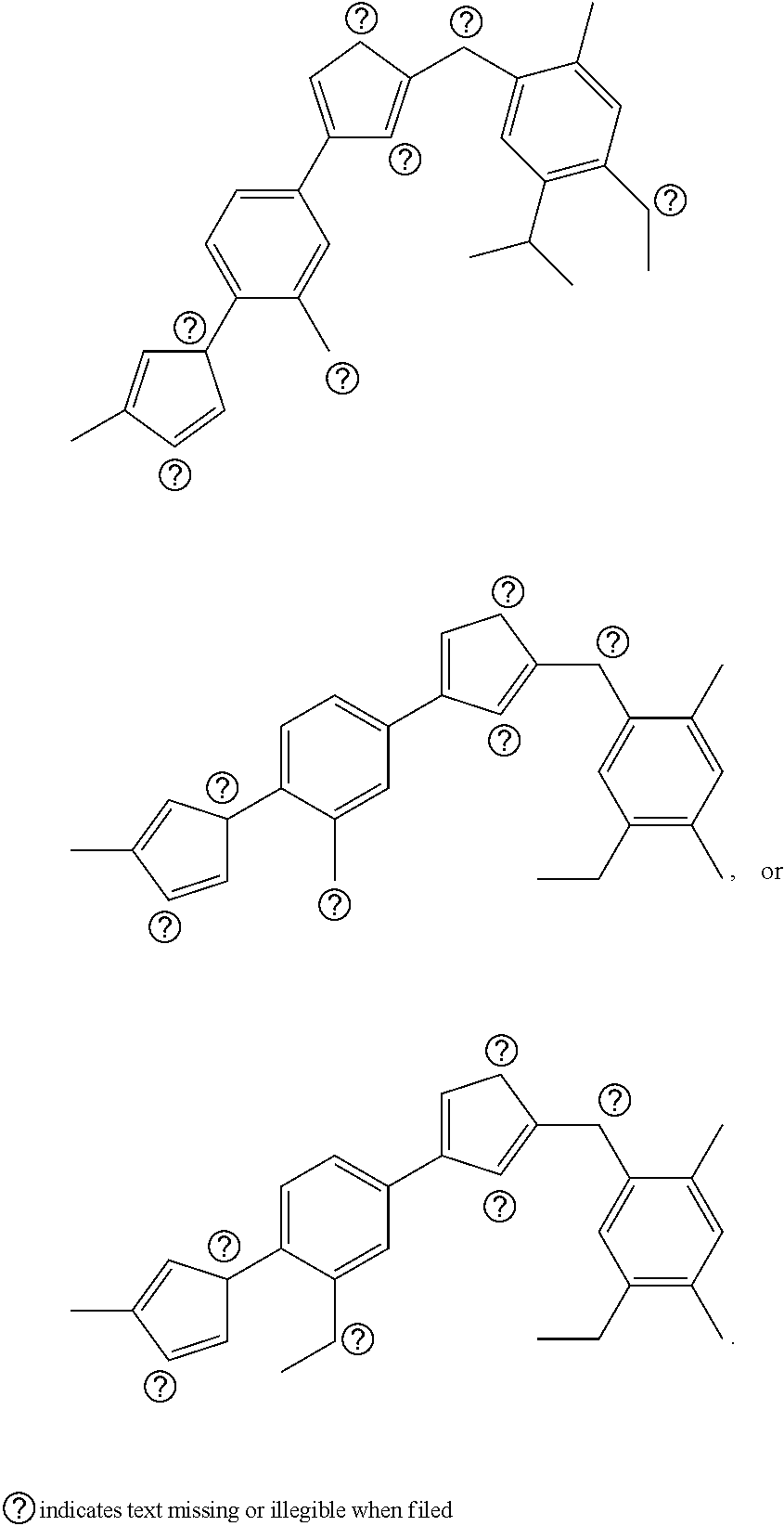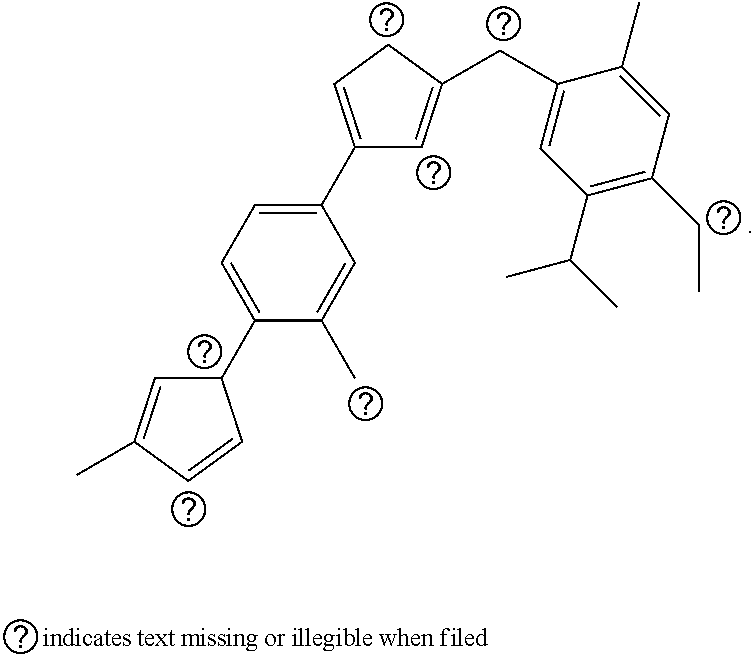Gamma-secretase modulatory compounds, methods for identifying same, and uses therefor
- Summary
- Abstract
- Description
- Claims
- Application Information
AI Technical Summary
Benefits of technology
Problems solved by technology
Method used
Image
Examples
example 1
[0231]This example shows that a gamma-secretase modulator, Compound 1 (i.e., a compound of Formula II, wherein:
[0232]A1 is 4-methyl 1,3-imidazole;
[0233]B1 is 2-fluoro phenyl;
[0234]C1 is thiazole;
[0235]D1 is 2-methyl-4-(2-aminoethoxy) 5-isopropyl phenyl; and
[0236]LC1 is —NH— linked at the 2-position of the thiazole),
selectively binds Pen-2 present in whole-cell lysates.
[0237]Compound 1, which bears a primary amine, was conjugated to Affi-Gel 10 resin (BioRad #153-6046) according to manufacturer's instructions. Compound 1 was dissolved in DMSO to a final concentration of 15 mg / ml. One ml of compound was mixed with approximately 1 ml of resin previously equilibrated in isopropanol. The compound and resin were rotated at room temperature for approximately 3 hr, washed with DMSO and the remaining unreacted groups were blocked with ethanolamine. The efficiency of coupling was generally greater than 80%, as determined by LC-MS analysis, with approximately 10-15 μmol of compound per ml of r...
example 2
[0240]This example shows that a gamma-secretase modulator, Compound 1, selectively binds isolated Pen-2 protein.
[0241]Prior to assessing binding to Compound 1, the proteins used in the binding assay were characterized. Purified GST (Abnova Corp) and GST-Pen2 (Abnova Corp #H00055851-PO1) proteins were confirmed to react with anti-GST (Novagen #71097-3) and anti-Pen-2 (PNT2) antibodies on an immunoblot. Additionally, the GST-Pen-2 protein, which contains a protease cleavage site between GST and Pen-2, was shown to be capable of cleavage using PreScission™ protease (Amersham #27-0843-01) to generate GST and Pen-2 proteins of the appropriate size (data not shown). To prepare purified Pen-2, about 1 μg of GST-Pen-2 was incubated with 4 μg of PreScission™ protease for 4 hr at 4° C. in Cleavage Buffer (50 mM Tris pH 7.4, 150 mM NaCl, 1 mM EDTA, 1% Triton X-100, 10% glycerol, 1 mg / ml phosphatidylcholine). Free GST and protease were removed by adding glutathione resin (Sigma #G4510) for 1 hr...
example 3
[0244]This example shows the selective binding of a gamma-secretase modulator, Compound 2 (i.e., a compound of Formula II, wherein:
[0245]A1 is 4-methyl 1,3-imidazole;
[0246]B1 is 2-fluoro phenyl;
[0247]C1 is thiazole;
[0248]D1 is 2-methyl-4-methoxy-5-isopropyl phenyl; and
[0249]LC1 is —NH— linked at the 2-position of the thiazole),
but not a gamma-secretase inhibitor, to Pen-2 in a surface plasmon resonance assay.
[0250]A surface plasmon resonance (SPR) assay was performed using the Biacore™ 2000 system and control software (Biacore Life Sciences), essentially as described in Warnmark et al. (2001) J. Biol. Chem. 276:23397-23404. Compound 2 or L-685,458 (Sigma #L1790) were diluted 30 fold from a 25 mM stock in 100% DMSO, then each further diluted into running buffer containing 10 mM HEPES, 150 mM NaCl, 1% Triton X-100, pH 7.4. The compounds were run in a 3-fold dilution series over a GST-Pen2 or a free GST flow cell surface. The binding responses at equilibrium for each compound were fit ...
PUM
| Property | Measurement | Unit |
|---|---|---|
| Structure | aaaaa | aaaaa |
| Cell angle | aaaaa | aaaaa |
| Interaction | aaaaa | aaaaa |
Abstract
Description
Claims
Application Information
 Login to View More
Login to View More - R&D
- Intellectual Property
- Life Sciences
- Materials
- Tech Scout
- Unparalleled Data Quality
- Higher Quality Content
- 60% Fewer Hallucinations
Browse by: Latest US Patents, China's latest patents, Technical Efficacy Thesaurus, Application Domain, Technology Topic, Popular Technical Reports.
© 2025 PatSnap. All rights reserved.Legal|Privacy policy|Modern Slavery Act Transparency Statement|Sitemap|About US| Contact US: help@patsnap.com



